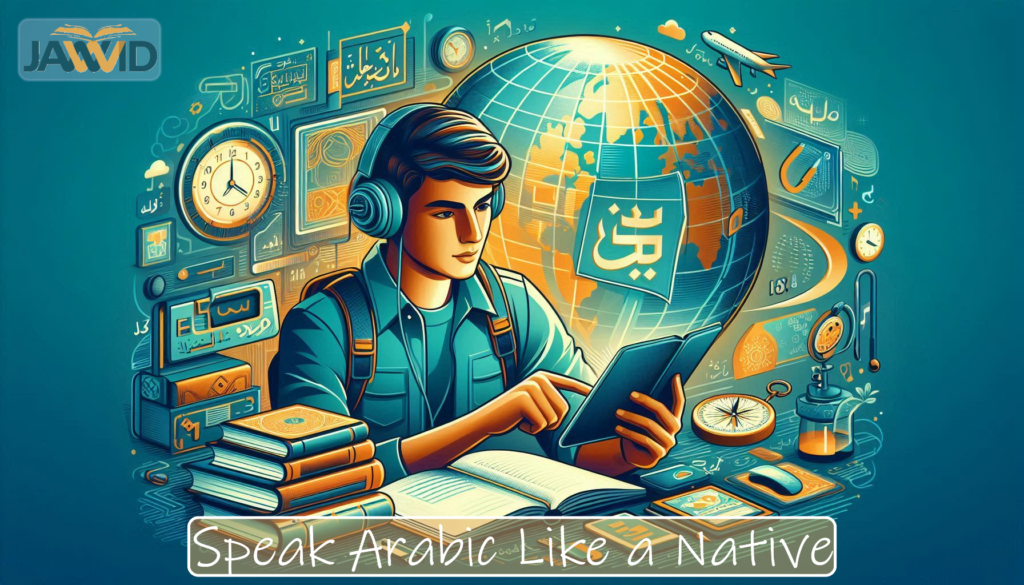Learning Arabic can feel like both an exciting challenge and a daunting task, especially for those starting from scratch. The unique sounds, complex grammar, and intricate script might seem overwhelming at first. However, with the right resources and mindset, fluency in Arabic is absolutely attainable. This article will explore how personalized learning, immersive techniques, and modern tools can empower you to speak Arabic like a native.
Why Arabic? The Global Importance of Learning Arabic
Arabic is the official language of 22 countries, spoken by over 420 million people worldwide. Its cultural, religious, and economic significance makes it a vital language for global communication. Whether you’re looking to conduct business in the Middle East or gain insight into Islamic heritage, learning Arabic opens a wealth of opportunities. Understanding the language also gives you access to the rich diversity of dialects and regional expressions used across the Arabic-speaking world.
Understanding the Arabic Language Structure
Before diving into Arabic lessons, it’s crucial to grasp the basic building blocks of the language. Arabic’s script, written from right to left, features 28 consonants and no vowels, which can make reading and writing a challenge. Additionally, Arabic grammar differs from many Western languages; its sentence structure places emphasis on verbs, and its roots often convey several meanings depending on the context. Familiarizing yourself with Arabic phonetics is essential to mastering pronunciation. Arabic includes sounds that are not found in English, such as the guttural “ع” (ain) or the sharp “ق” (qaf), which require practice and attentiveness to produce correctly.
Choosing the Right Method to Learn Arabic
There are several ways to learn Arabic, but the key is choosing a method that suits your learning style. Personalized lessons, whether through a tutor or a customized app, allow you to progress at your own pace. While traditional classroom learning is valuable, online learning offers flexibility and tailored resources that make it easier to practice when it fits your schedule. Immersion is another powerful tool: hearing native speakers daily and practicing conversations with them will drastically improve your language skills.
Immersion Techniques for Arabic Learners
One of the most effective ways to accelerate your Arabic learning is immersion. This involves surrounding yourself with the language in various forms. Watching Arabic TV shows, movies, and listening to Arabic music exposes you to both formal and colloquial expressions. It helps you become familiar with the rhythm and flow of the language, making it easier to understand and speak. Traveling to an Arabic-speaking country or joining an Arabic-speaking community online enables you to practice the language in real-life situations, which is essential for gaining fluency.
The Role of Technology in Accelerating Arabic Learning
In today’s digital age, technology plays a pivotal role in language acquisition. There are numerous language learning apps and websites tailored specifically to Arabic learners. These platforms offer interactive lessons, quizzes, and speaking exercises that help reinforce grammar and vocabulary. Many of these tools also provide access to virtual tutors, podcasts, and interactive Arabic games that make learning enjoyable and engaging. Social media platforms are another great resource: following Arabic-language pages, joining discussion groups, and watching videos can enhance your learning.
Overcoming Common Challenges in Learning Arabic
Learning Arabic does come with its challenges. The complexity of dialects, with each region offering distinct variations of the language, can be confusing for learners. Additionally, understanding and mastering formal Arabic (Modern Standard Arabic) while also learning conversational Arabic may seem overwhelming. It’s important to tackle one step at a time and avoid getting discouraged by these hurdles. Motivation is key to continued progress, and celebrating small victories, like mastering a tricky pronunciation or sentence structure, can keep you on track.
Tips for Learning Arabic and Speaking Like a Native
Achieving native-like fluency in Arabic requires consistent practice and attention to detail. One of the best ways to improve pronunciation is by mimicking native speakers—listening carefully to their rhythm, tone, and stress patterns. Expanding your vocabulary through flashcards, conversation, and real-world use of the language is another important step. Additionally, understanding and using colloquial expressions and slang will help you sound more natural when speaking and Learning Arabic.
Conclusion
The journey to Learning Arabic and speaking like a native is filled with challenges, but it is one that offers immense rewards. By focusing on personalized lessons, immersion, and using modern technology, you can make significant strides toward mastering the language. Whether for personal growth, career advancement, or cultural exploration, learning Arabic opens doors to a richer, more connected world. Start your journey today—dive into the resources available, engage with native speakers, and embrace the beauty of the Arabic language with Jawwid Academy.



